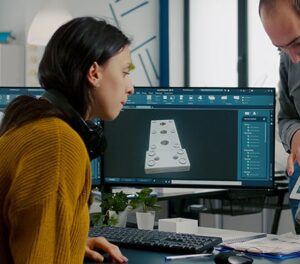TRAC
TRAC Challenges Traditional Venture Funding with Innovative ‘Moneyball’ Approach to Business Investment
The design software development tax credit is a federal tax credit that helps businesses offset the cost of developing custom software. It was created to encourage businesses to invest in custom software development, which can help them improve their competitiveness and productivity.
The credit can be used to offset the cost of research and development activities, such as payroll for data scientists and other engineers, electrical systems, materials, and contractors. It is available for both qualified small businesses and large corporations. To be eligible, businesses must have incurred eligible software research and development costs.


Design R&D is a very important part of product development, and it can be quite costly. Fortunately, the U.S. government offers a tax credit for companies that engage in design R&D.
Tax credits can be used to offset some of the costs associated with design features and research, and it can make it more affordable for companies to invest in this type of qualified research and development.
Engineering design R&D is also a vital part of the product development process and is eligible for the same tax credit as design R&D but qualifying work must be done, and investments in innovation are required.
The bottom line is that both design R&D and engineering design R&D are important parts of the product development process, but only one of them is eligible for the tax credit. If you are planning on undertaking either type of research and development, it is important to understand the difference between the two so that you can claim the correct tax credit.
To be eligible, the engineering or architecture firms must meet all of the following criteria:
If the engineering or architectural services meet all of the above criteria, the company may be eligible for a credit for the eligible expenses incurred for those services. Eligible expenses include qualified research activities and experimentation costs; salaries and wages paid to engineers, project managers, and other qualified personnel; costs of materials used in engineering design activities; supply costs, building systems, and costs of computer software used in engineering activities.
The tax incentive is available for both qualified small businesses and large businesses.

The Design R&D Tax Credit is a tax credit that can be claimed by businesses that incur expenditure on qualified activities relating to the design of products, processes, or services. The credit is intended to encourage businesses to invest in R&D activities that will lead to new or improved designs of their products or services.
To be eligible, the company must meet all of the following criteria:
The Design R&D Tax Credit can be a valuable source of support for businesses undertaking R&D activities. The tax incentive can help businesses to offset the costs of extensive research, making it more affordable to invest in innovation.
If you have any questions about whether your design qualifies for the tax credit, you should contact a qualified tax professional. They will be able to help you determine if you are eligible and assist you with claiming the credit.
To be eligible for the credit, your activities must meet certain criteria. First, they must be related to the design of a new or improved product, process, formula, or software development. They must also involve experimentation or analytical work was undertaken to eliminate technical uncertainty. Activities that do not meet these criteria, such as market research, will not qualify.
If you use your software programs for any of the activities listed above, you may be eligible for the tax credit.
The Boast platform gathers data from your technical and financial systems to identify and categorize eligible projects, time, and expenses—estimating along the way instead of only at the end—and getting you more money, faster, for less time, and risk.

TRAC Challenges Traditional Venture Funding with Innovative ‘Moneyball’ Approach to Business Investment


British Columbia Tech Companies’ Growth and
Innovation Accelerated by Partnership between NVBC and Boast

Our Design & Rendering Software R&D tax experts will quickly assess which of your activities are eligible for R&D tax credits. During this conversation we will highlight: